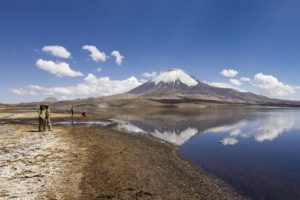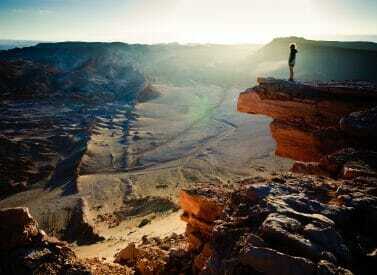When and Where to Go Stargazing in Chile
 by Alan Lyall on 24th July, 2020
by Alan Lyall on 24th July, 2020

Credit: Sernatur
The skies over Chile’s Atacama Desert are blessed with over 300 clear nights per year, ideal for stargazing. These clear skies mean that this part of the country has become one of the world’s principal sites for astronomic observatories. Chile is now a major astrotourism destination.

Milky Way
Best places for stargazing
The towns in the altiplano in the Atacama Desert are the best place for star gazers to literally get their fill of the star filled sky. Towards the coast there is a higher chance of cloud cover, so inland at altitude, you are almost guaranteed clear skies. The smaller the town , the less the light pollution, and the more spectacular the panorama.
This is a year round activity. There is a greater chance of cloudy skies in the austral summer, December through March.
Beware of the full moon as the light it generates will “blot out” the majority of stars. The best time is with a new moon. Plan your visit according to the phases of the moon and to do so there are many online moon calendars.
Elqui Valley: The valley is just north of La Serena and the principal town is Vicuña. There are plenty of small and quaint places to stay and the place has a certain reputation for being mystical. The scenery is incredible and it is one of the principal producers of Chile’s national spirit Pisco, a grape brandy.

Elqui Valley
San Pedro de Atacama: This is the prime destination in the Atacama Desert. Nearby you will find salt flats where flamingos breed, geyser fields and pre-Columbian archaeological sites. Other attractions include incredible valleys with multicoloured rock formations, altiplanic lakes and much wildlife.
The night skies are a major attraction and you will find the options of several star gazing guided tours.

San Pedro de Atacama
Putre: Inland from Arica and high up in the Altiplano is this off the beaten path town. Small and charming, it is within easy access of Lake Chungara (over 4,500 metres above sea level) in the Lauca National Park.

Lago Chungara
Visiting observatories
It is possible to visit some of the principal astronomical observatories which have sprung up in Chile after massive investment by many multinational agencies. However, if you wish to see the stars, a research astronomical observatory is not the place to do so. Tours are arranged during the day leaving astronomers undisturbed and able to focus on their scientific research. They do offer a fascinating glimpse into the industry and the vast scale of its infrastructure.
The European Southern Observatory offers daytime weekend tours, which are free of charge and accompanied by an English speaking guide. These have to be booked in advance. The following ESO observatories can be visited.
Location: San Pedro de Atacama
Nearest town with accommodation: San Pedro de Atacama (33 km)
Altitude: 2900 m
Note: Alma provides bus transfers to and from San Pedro de Atacama.

Alma
Location: Cerro Paranal
Nearest town with accommodation: Antofagasta (129 km)
Altitude: 2600 m
Location: Cerro La Silla
Nearest town with accommodation: La Serena (150km). Copiapó (278 km)
Altitude: 2350 m

La Silla
Mamalluca
There is an observatory which is dedicated to tourism. This is Mamalluca in the Elqui Valley. It is 9 Km from Vicuña and offers night time tours which include observations through its 12 inch telescope. Tours last 4 hours and can include transfers from La Serena or Vicuña.

Mamalluca
Chile is a destination where stargazers will not be disappointed. Whether the focus of your holiday or a great addition to it, no matter what you will not fail to be impressed. The sky is the limit.
Share


 a Group Tour
a Group Tour  a Tailor Made Tour
a Tailor Made Tour 













